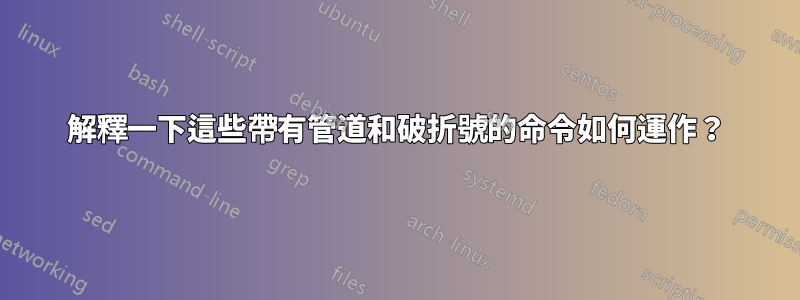
這些帶有管道和破折號的命令如何(以及為什麼)準確地工作?
pacman -Qqdt | sudo pacman -Rns -
答案1
一個單獨的破折號(-),沒有選項,通常意味著“從標準輸入讀取”。這是許多程式使用的非常常見的約定。管道|是將一個程式的標準輸出連接到另一個程式的標準輸入的一種方式。由於pacman預設不從標準輸入讀取,如果您希望它這樣做,您可以使用-.
因此,您顯示的命令執行以下操作(請參閱man pacman):
pacman -Qqdt:-Q, --query Query the package database. This operation allows you to view installed packages and their files, as well as meta-information about individual packages (dependencies, conflicts, install date, build date, size). This can be run against the local package database or can be used on individual package files. In the first case, if no package names are provided in the command line, all installed packages will be queried. Additionally, various filters can be applied on the package list. See Query Options below. -q, --quiet Show less information for certain query operations. This is useful when pacman’s output is processed in a script. Search will only show package names and not version, group, and description information; owns will only show package names instead of "file is owned by pkg" messages; group will only show package names and omit group names; list will only show files and omit package names; check will only show pairs of package names and missing files; a bare query will only show package names rather than names and versions. -d, --deps Restrict or filter output to packages installed as dependencies. This option can be combined with -t for listing real orphans - packages that were installed as dependencies but are no longer required by any installed package. -t, --unrequired Restrict or filter output to print only packages neither required nor optionally required by any currently installed package. Specify this option twice to include packages which are optionally, but not directly, required by another package.結合起來,這些選項意味著“查詢資料庫以尋找作為其他套件的依賴項安裝的套件,僅顯示套件名稱,並將輸出限制為任何目前安裝的套件都不需要的套件”。換句話說,顯示那些因為其他東西需要而安裝但由於其他東西已被刪除而不再需要的軟體包。
sudo pacman -Rns -:-R, --remove Remove package(s) from the system. Groups can also be specified to be removed, in which case every package in that group will be removed. Files belonging to the specified package will be deleted, and the database will be updated. Most configuration files will be saved with a .pacsave extension unless the --nosave option is used. See Remove Options below. -n, --nosave Instructs pacman to ignore file backup designations. Normally, when a file is removed from the system, the database is checked to see if the file should be renamed with a .pacsave extension. -s, --recursive Remove each target specified including all of their dependencies, provided that (A) they are not required by other packages; and (B) they were not explicitly installed by the user. This operation is recursive and analogous to a backwards --sync operation, and it helps keep a clean system without orphans. If you want to omit condition (B), pass this option twice.還有
-(強調我的):呼叫 pacman 涉及指定具有任何潛在選項和操作目標的操作。目標通常是套件名稱、檔案名稱、URL 或搜尋字串。目標可以作為命令列參數提供。 此外,如果標準輸入不是來自終端並且單個連字符 (-) 作為參數傳遞,則將從標準輸入讀取目標。
因此,
pacman -Rns -將從標準輸入中讀取套件名稱並刪除其中的任何套件名稱及其依賴項,而不保留備份。
因此,整個命令將找到系統上不再需要的軟體包並將其刪除。這是清理系統中不需要的軟體包的有用方法。


